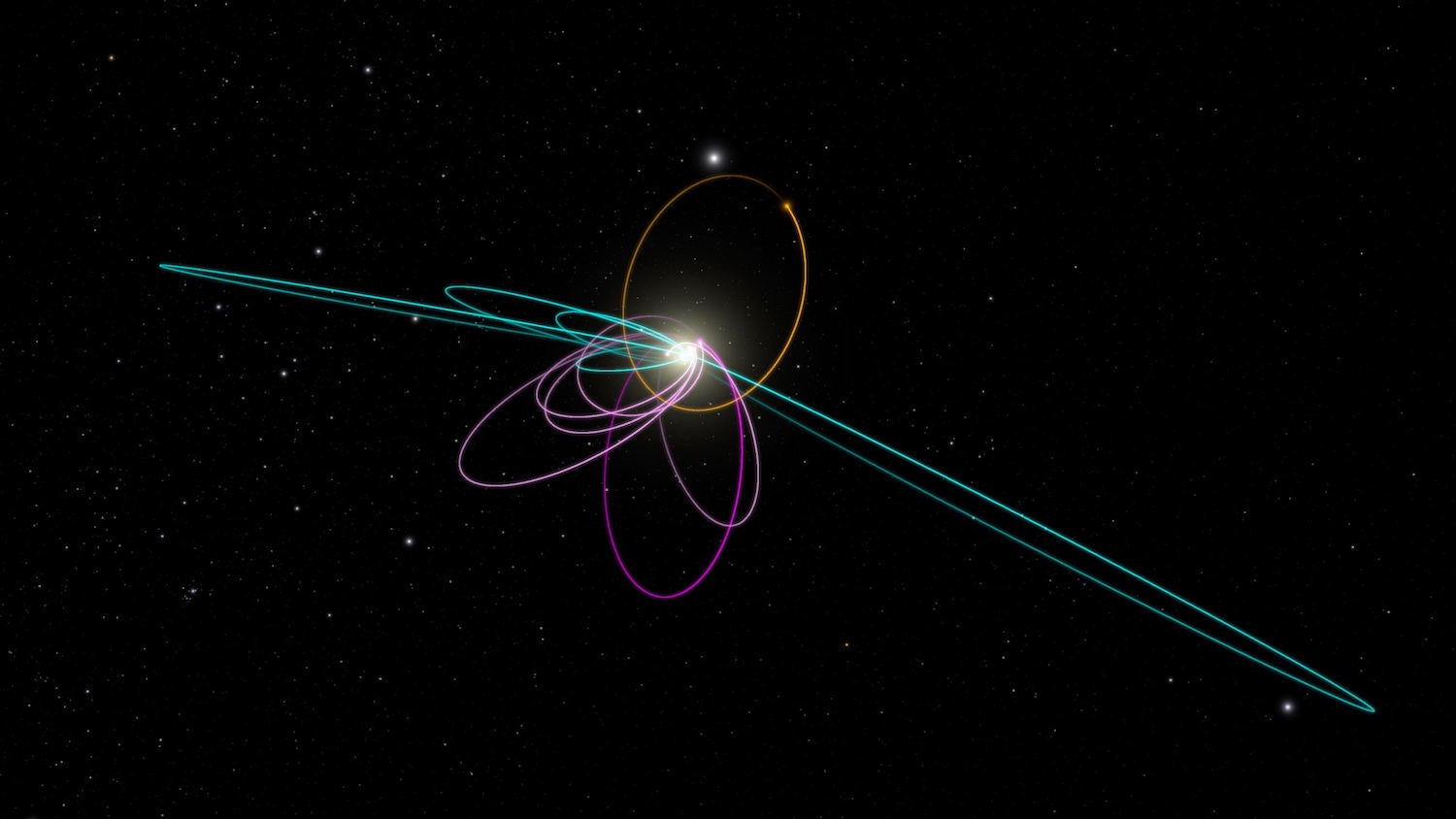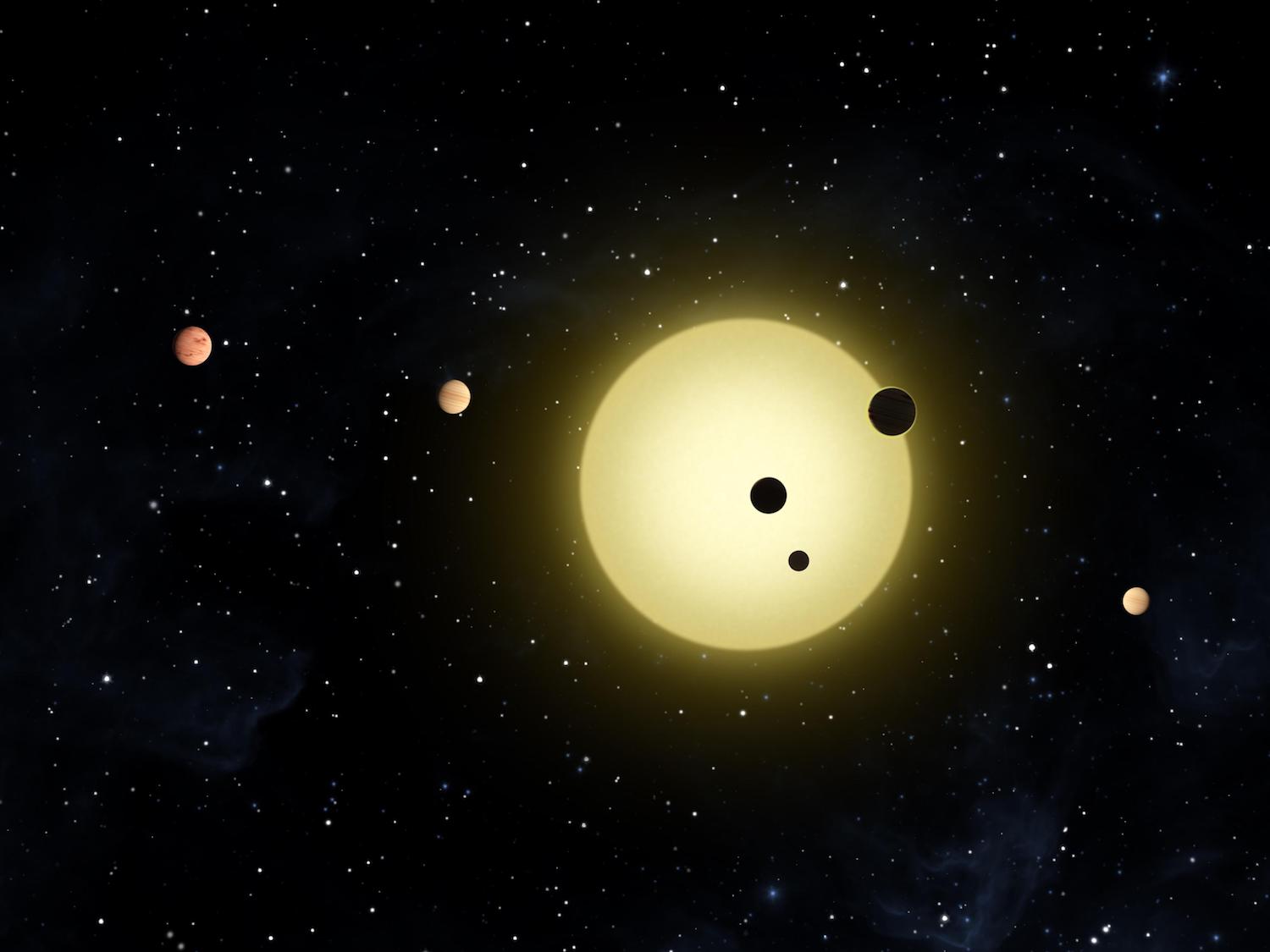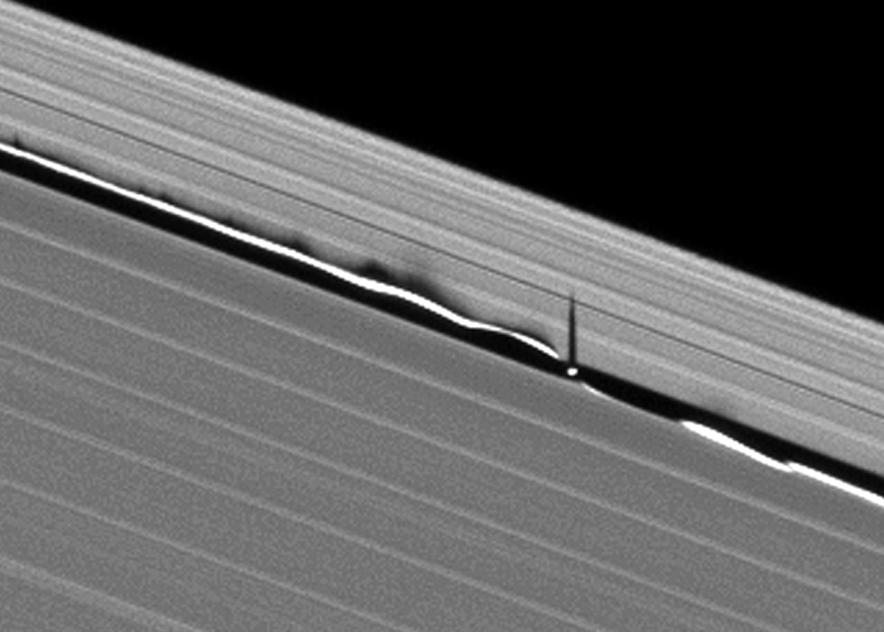 Snapshot of REBOUND simulation of Saturn's Rings.
Snapshot of REBOUND simulation of Saturn's Rings.
REBOUND code
Many N-body codes have been developed over the years. But REBOUND is different. REBOUND is built around a few core principles:
- Open Source. REBOUND is open source and will always be open source. Furthermore, all development is done in the open too. There are no secret development branches only available to colloaborators. I don't think secrets and science work well together.
- Easy to use. The python interface to REBOUND allows you to access all the features of REBOUND with minimal effort. Setting up a simulation often takes only a few lines of code. Built-in interactive visualization modules let you monitor the simulations in real-time.
- Accuracy. The integrators that come with RBEOUND, WHFast and IAS15 are among the world's most accurate integrators for long-term N-body simulations.
- Speed. Many of the core routines in REBOUND have been heavily optimized.
The REBOUND project started in summer 2011, when Shang-Fei Liu and I started to write REBOUND during the ISIMA summer school. It is a highly modular code that can handle a variety of problems such as long term orbit integrations, planetary rings and even debris disks. We use a set of highly efficient numerical algorithms and integrators. For example, the Symplectic Epicyclic Integrator (SEI) that I developed together with Scott Tremaine, is ideally suited for studying ring dynamics. The WHFast integrator, on the other hand is well suited for studies of the Solar System. The self-gravity between particles can be calculated using a distributed tree, an FFT method or even a GRAPE. The collision detection makes use of a tree code or an efficient plane-sweep algorithm.
In recent years REBOUND has become a community project with many collaboratos. Most notably Dan Tamayo and Dave Spiegel. Many of my students have also contributed to REBOUND. The code is still being actively developed. Check out its github page to see what is new. Although REBOUND is a very young code, it has already lead to numerous publications.
 Planet 9 and Kuiper Belt objects (Caltech/R. Hurt/WorldWide Telescope)
Planet 9 and Kuiper Belt objects (Caltech/R. Hurt/WorldWide Telescope)
 Artist's conception of Kepler-11 (NASA/Tim Pyle)
Artist's conception of Kepler-11 (NASA/Tim Pyle)
 A (very big) moonlet inside Saturn's rings (NASA/JPL/SSI)
A (very big) moonlet inside Saturn's rings (NASA/JPL/SSI)